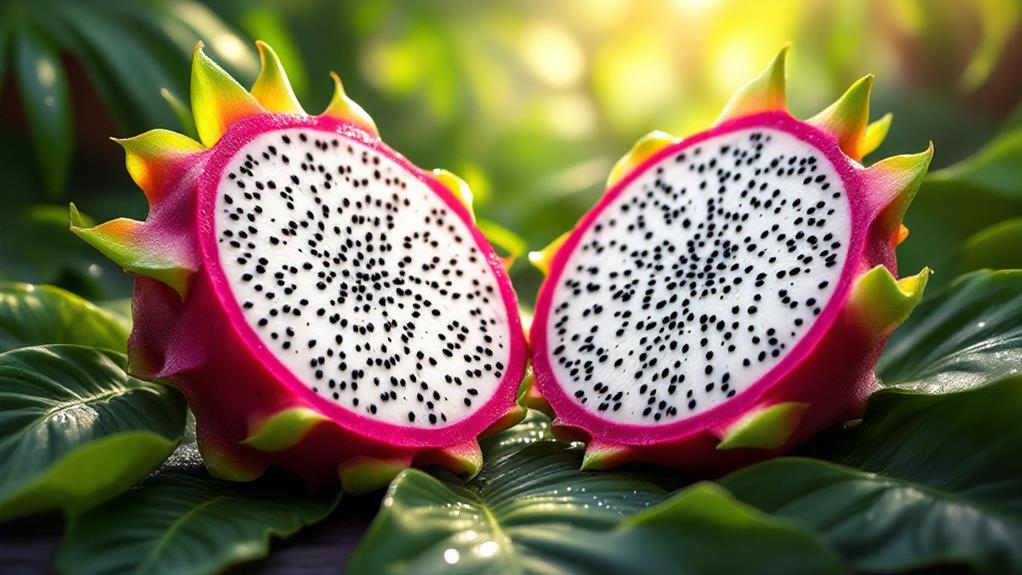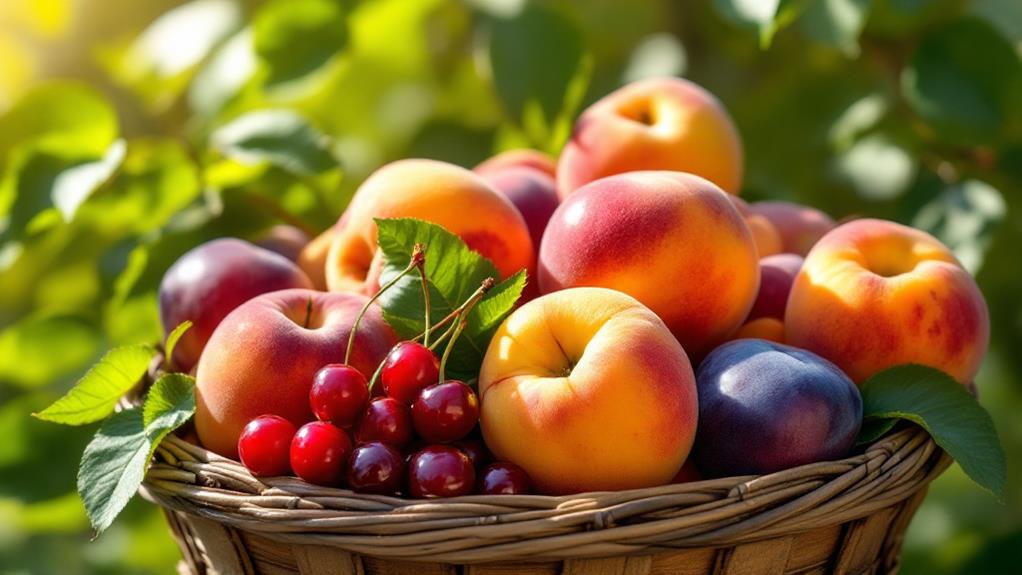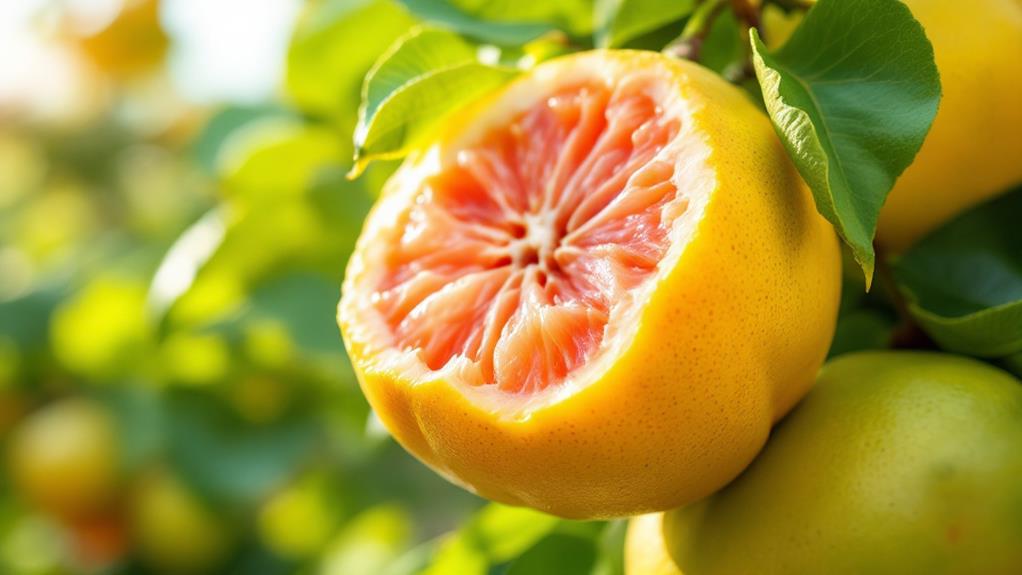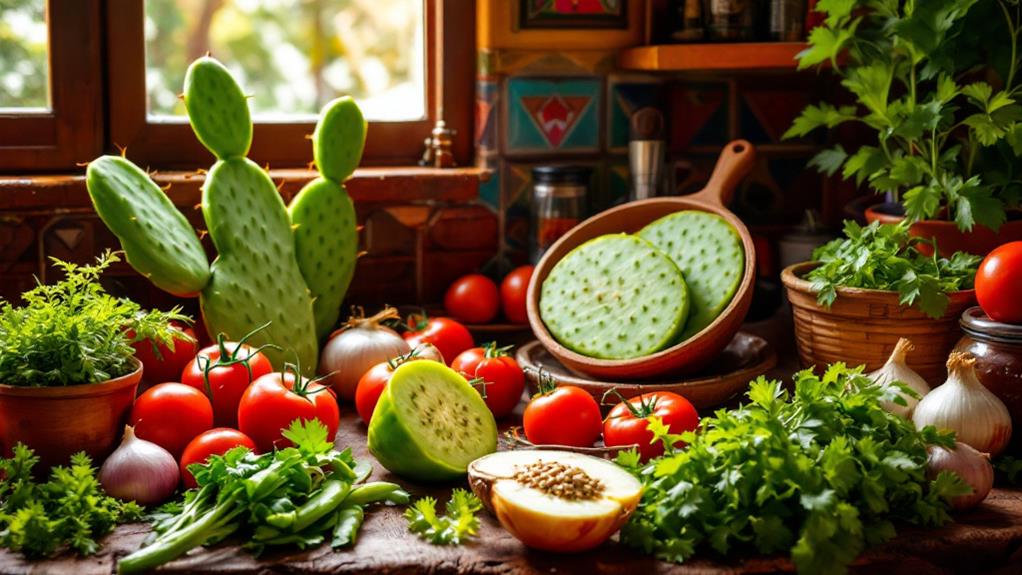Learn More About Akebi Fruit: A Rare and Exotic Delight
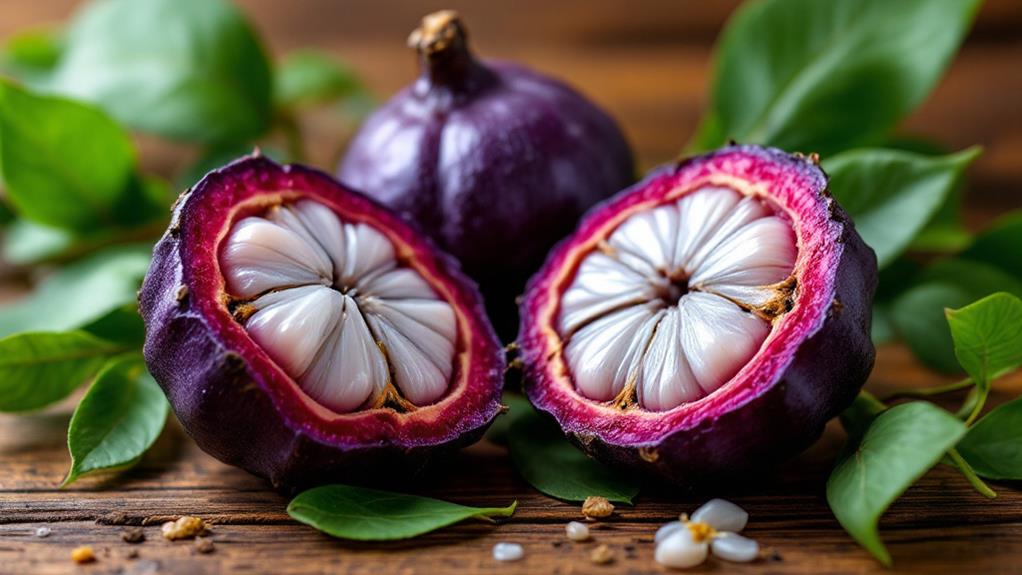
Explore the enchanting Akebi fruit, a rare autumn delicacy native to Japan's Tohoku region. With its unique cylindrical shape and thick, spongy skin, this fruit ripens to reveal a mildly sweet and slightly bitter translucent flesh, packed with antioxidants and vitamin C. Immerse yourself in Japanese culture with this fruit, traditionally offered during the Obon festival and symbolizing seasonal change. Savor its versatility in dishes, from raw and sautéed preparations to groundbreaking smoothies and jellies. Uncover the Akebi's rich history and health benefits, offering a glimpse into its culinary and cultural significance that awaits your exploration.
Akebi Fruit Overview
Akebi, often called the chocolate vine, is a fascinating fruit native to northern Japan, especially the Tohoku region. You'll find it primarily cultivated in Yamagata Prefecture, where its unique characteristics make it a rare delicacy. The akebi fruit is cylindrical to oblong, measuring between 5-10 cm in length. Its thick, spongy skin shifts from green to an eye-catching white or ivory as it ripens. Inside, you'll encounter translucent, gelatinous flesh that encases small black-brown seeds. You can choose to consume these seeds or discard them, depending on your preference.
This fruit is known for its limited availability, typically harvested in early fall, marking the beginning of the autumn season in northern Japan. Akebi's subtly sweet taste distinguishes it from other fruits, offering more nuance than the sweeter violet-purple varieties. The combination of its unique appearance and taste makes akebi a sought-after fruit in the areas where it's grown. Despite its intriguing qualities, it's not widely available outside the region, which adds to its exotic allure. As you investigate the fascinating world of akebi, you'll appreciate its cultural significance and the delightful experience it offers.
Unique Taste Profile
Exploring the akebi fruit's appearance and cultural significance naturally leads to its intriguing taste profile. The White Akebi offers a unique taste profile with its soft and crunchy consistency, reminiscent of pear and melon. Its translucent, gelatinous flesh is subtly sweet and bitter, creating a delicate balance that intrigues your palate. The black-brown seeds embedded in the flesh provide an alternative crunch, adding to the unique eating experience. You can either munch on them or discard them based on your preference.
To achieve the ideal taste, it's vital to take into account the fruit's proper ripeness. As the White Akebi ripens, its inner flesh becomes sweeter, while the outer skin and seeds maintain a naturally bitter flavor. This contrast is a significant part of its charm, making it a versatile ingredient in different dishes. Unlike its violet-purple counterparts, the White Akebi's less sweet, neutral taste allows for creative culinary uses.
Keep an eye out for a cracked peel, which indicates the fruit's readiness for consumption. At this stage, the akebi fruit offers its most enjoyable flavor and texture, making it a delightful treat for adventurous food lovers.
Seasonal Availability
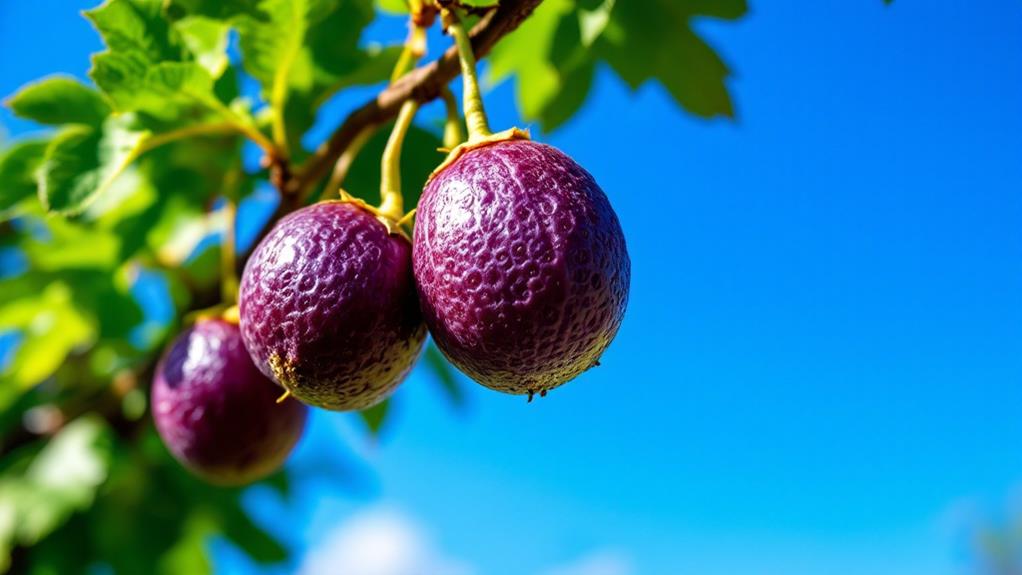
During the brief window of early fall, akebi fruit becomes a sought-after gem for those in the know. This unique fruit, found primarily in northern Japan, is available for only a limited time each year. The peak harvest period lasts about two weeks, making it an keenly awaited event for fruit enthusiasts and locals alike. As the initial ripe fruit of the season, akebi signals the arrival of autumn, drawing people to markets in search of this specialty item.
The seasonal availability of akebi is a significant aspect of its allure. Because it's only accessible during this short window, it's considered a rare delicacy. Freshness is essential to fully appreciate akebi's unique taste and texture, so timing is everything. You'll find that the fruit's flavor profile is best experienced when it's consumed shortly after ripening. This means you need to act quickly to savor akebi at its finest.
Regional and market variations can influence when and where you can find akebi, adding an element of exclusivity. If you're lucky enough to spot this fruit, seize the opportunity to enjoy one of nature's fleeting jewels.
Botanical Facts
While native to the lush regions of northern Japan, particularly the Tohoku area, Akebia quinata, or akebi, offers more than just its exotic appeal. This rare fruit belongs to the Lardizabalaceae family and stands out with its unique appearance and taste. The akebi fruit is cylindrical to oblong in shape, typically measuring 5-10 centimeters in length. As it ripens, its thick, spongy skin transforms from green to a striking white or ivory.
The inside of the akebi reveals a translucent, gelatinous flesh that encases small black-brown seeds. These seeds are edible, adding to the fruit's distinctive texture and flavor profile. Different cultivars of akebi exist, including a wild variety that naturally splits open when ripe and a cultivated type that remains closed, often grown for ornamental and culinary purposes.
Akebi is considered a rare fruit, primarily available in early autumn, making it a seasonal delicacy. Its limited availability contributes to its sought-after status in local markets. If you find yourself in northern Japan during this time, don't miss the chance to experience the unique taste and texture of this intriguing fruit.
Health Benefits
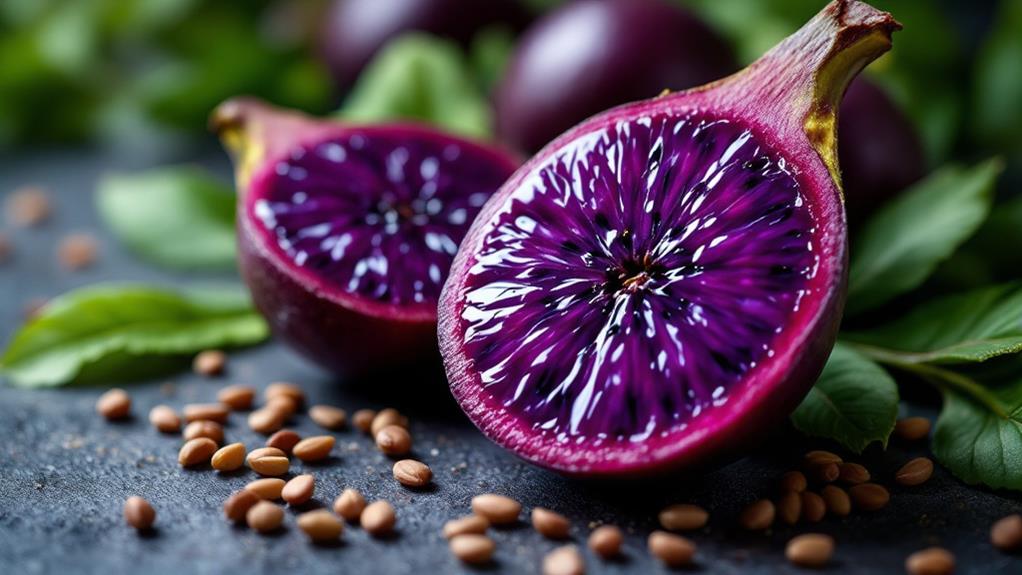
You'll find several notable health benefits when you include akebi fruit in your diet. Packed with vitamin C, akebi provides 65 mg per serving, which plays a critical role in strengthening your immune system and improving skin health. This exotic fruit also contains vital minerals like potassium, offering 240 mg per serving, which supports general wellness by maintaining healthy blood pressure levels.
The akebi fruit isn't just about what's inside. Its peel, often overlooked, is rich in concentrated nutrients and shouldn't be discarded. Accept its full potential by incorporating the peel into your consumption for a more nutrient-dense experience. Akebi's anti-inflammatory properties are notable, too. In traditional medicine, it's used as a diuretic to help reduce bodily dampness, offering relief from certain minor ailments.
Moreover, the fruit's abundant antioxidants are a benefit for your health. They not only support cold prevention but also contribute to beautifying your skin, giving it a radiant glow. Regularly enjoying akebi fruit can be a delightful way to enhance your health and wellness, tapping into its array of benefits rooted in both traditional and nutritional wisdom.
Culinary Applications
Akebi fruit's versatility shines in the kitchen, offering a range of culinary applications that cater to different tastes. You can enjoy akebi both raw and cooked, with methods like frying, sautéing, and grilling to bring out its unique flavor. The flesh and seeds are edible, although the seeds are often swallowed or discarded. Pairing the flesh with lemon juice can balance its subtle sweetness, giving you a delightful experience.
To make the most of akebi's adaptability, consider these culinary ideas:
- Pickles: Improve the akebi's sweetness and flavor by mixing it with salt for pickling. This traditional preparation makes for a popular and unique side dish.
- Jellies and Jams: Utilize the akebi's natural sweetness to create delightful jellies and jams. These spreads can add a unique flavor to your breakfast table.
- Smoothies: Blend the flesh into smoothies for a revitalizing and exotic twist on your favorite recipe.
Don't overlook the young stems and flower buds, which are also edible. Add them to salads or stir-fry dishes for extra texture and flavor. Akebi's culinary applications are vast, allowing you to investigate and enjoy this rare fruit in numerous delightful ways.
Cultural Significance

A symbol of tradition and seasonal change, akebi holds a special place in Japanese culture. In the Tohoku region, this rare fruit heralds the arrival of autumn, marking a time when rural children historically foraged for its wild bounty. It's more than just a fruit; akebi's cultural significance is deeply intertwined with Japan's spiritual practices. During the Obon festival, families often place akebi on Buddhist altars, offering it to honor ancestral spirits and maintain a connection with those who have passed.
The fruit's seasonal availability boosts its status as a delicacy, making it a highly sought-after item. Despite its rarity, akebi continues to inspire both traditional practices and modern culinary innovation. It encourages you to engage with local food culture, exploring unique flavors and textures. While many Japanese people have yet to experience this exotic fruit, akebi remains a symbol of Japan's diverse agricultural produce.
Geographic Origins
Situated in the northern Tohoku region of Japan, akebi thrives particularly in Yamagata Prefecture, which proudly produces 93% of the country's supply. Known botanically as Akebia quinata, this rare and exotic fruit has fascinating geographic origins. Originally uncovered in wild forests, akebi has been cultivated in Japan for centuries. However, it was only about 20 years ago that commercial cultivation took off, allowing more people to enjoy its unique qualities.
Akebi's appeal isn't confined to Japan. The fruit has also extended its roots to neighboring countries like China and Korea, where it's similarly cherished. Over time, it even made its way to the West, appearing in Britain as early as 1845 and later in the United States. Despite its spread, akebi remains a rarity, primarily available in specialty markets.
To better appreciate the akebi fruit's path:
- Origin: Native to Japan's northern Tohoku region, particularly Yamagata Prefecture.
- Spread: Found in China, Korea, and occasionally in Europe and the U.S.
- Varieties: Wild akebi splits open when ripe, while cultivated types stay closed.
Akebi's geographic origins contribute greatly to its allure, making it a sought-after delicacy worldwide.
Creative Recipe Ideas
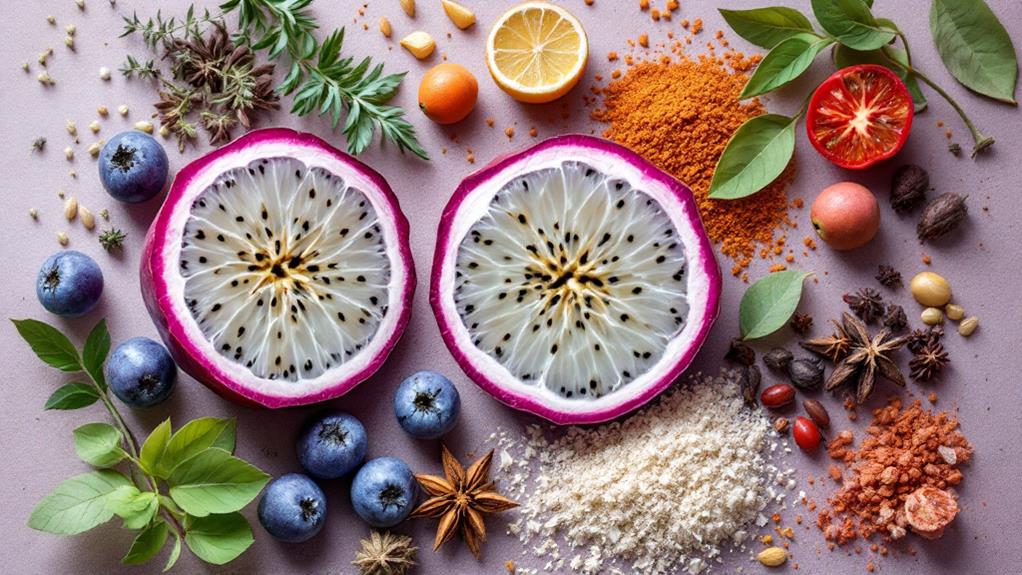
As you investigate the fascinating adventure of akebi from its roots in Japan to its presence in diverse culinary landscapes, you'll find it likewise intriguing in the kitchen. Akebi offers a bounty of creative recipe ideas, starting with its potential as a invigorating drink. Blend akebi with yogurt and honey to amplify its subtle sweetness, crafting a smoothie that's both exotic and delightful. If you're looking to serve a unique side dish, consider pickling akebi in plum juice. This process balances the fruit's natural bitterness while highlighting its distinctive flavor.
For something heartier, stuffed akebi pods are a must-try. Fill them with ground meat, miso, and vegetables, then deep-fry for a savory treat that's bursting with flavors. The flesh of akebi isn't just for filling; it can be sautéed or deep-fried to create akebi pod katsu, showcasing its versatility in cooking. Furthermore, incorporating akebi into a salad with microgreens adds an intriguing, crunchy texture and an unexpected flavor twist. Each of these dishes promises a unique culinary experience, making akebi a versatile ingredient that's perfect for anyone seeking an exotic delight in their cooking repertoire.

